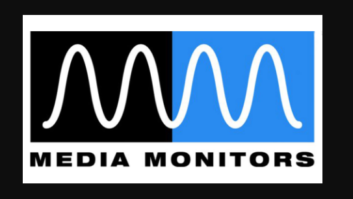
Ben Barber Ben Barber is president/CEO of Inovonics Inc. He comments as part of Radio World’s special series on tech trends in modulation monitor design.
You make AM/FM off-air monitors and demod/metering for A and D measurements, among other products. How has this class of products changed notably in five to 10 years?
Barber: Over the time period noted, a need certainly remains for accurate, yet simple hardware for day-to-day transmitter setup and “confidence monitoring.” That is, a standalone box in the rack room, or even in the studio, that can be trusted for accuracy to confirm legal operation, and something the owner and PD can read and understand.
But as broadcasting technology evolves with advances like HD Radio and AM carrier control, instrumentation becomes more complex. Much of the responsibility for plant maintenance has shifted toward contract engineering services where full-time staffing is not available.
In what direction are mod monitors heading next?
Barber: Just as consumer radios are becoming more and more “software-defined,” so will professional monitoring equipment need to keep pace with advances in broadcast and receiver technology. As an expensive piece of test equipment, a mod monitor should be easily upgraded with firmware updates to handle whatever comes down the pike over the expected life of the product.
What unique problems for monitoring and measurement are generated by HD Radio?
Barber: I wouldn’t say the HD Radio generates unique problems, it’s simply a second transmission that rides along at the same center frequency as the analog signal. The monitoring equipment actually needs to be two independent receivers in one to do justice to both transmission channels, rather than one receiver that simply switches between modes. On top of that, the analog/HD mod-monitor needs to keep watch on the overall spectrum to snag any nasties generated by having two, unlikely-bedfellow signals occupying common bandwidth.
And for RDS?
Barber: RDS has taken a very long time to penetrate the U.S. broadcast market, though today with the availability of so many more receivers out there, stations are seeing the benefit through branding, advertising and simply enhancing the listener’s experience.
We were very early proponents, offering an RDS encoder back in the mid-’90s, and have been pushing RDS ever since. And just as very basic RDS encoding has become incorporated into new FM exciter designs, RDS monitoring should be a natural part of the FM mod-monitor function. We believe that its added value is finally being appreciated.
Does industry discussion about Single Side Band Suppressed Carrier affect you?
Barber: This is an interesting concept, and one that we are keeping an eye on. Fortunately the implementation of this technology is a relatively simple matter in the digital domain, though there are questions about consumer receivers being able to deal with the Single Side Band Subcarrier that will have to be answered.
What should a smart buyer know about mod monitors today?
Barber: A smart buyer should make certain that the product he chooses comes from a manufacture with a strong track record, is well supported and is easily upgraded to embrace technologies on the horizon.
Briefly, what is your newest or most notable product?
Barber: At NAB 2013 we will debut three monitors, one for FM and RDS, other for AM and a third for Internet Radio Monitoring. The first two are not modulation monitors as such, but budget-priced units that meet a basic need for signal, program and data confidence monitoring.
The third is a unique product in that there is nothing else available in the market like it! The unit is a dedicated hardware solution for monitoring your stations’ streaming and metadata, with logging functions and notifications via text/email if there are any issues with it. We anticipate a lot of interest in this product sector.







